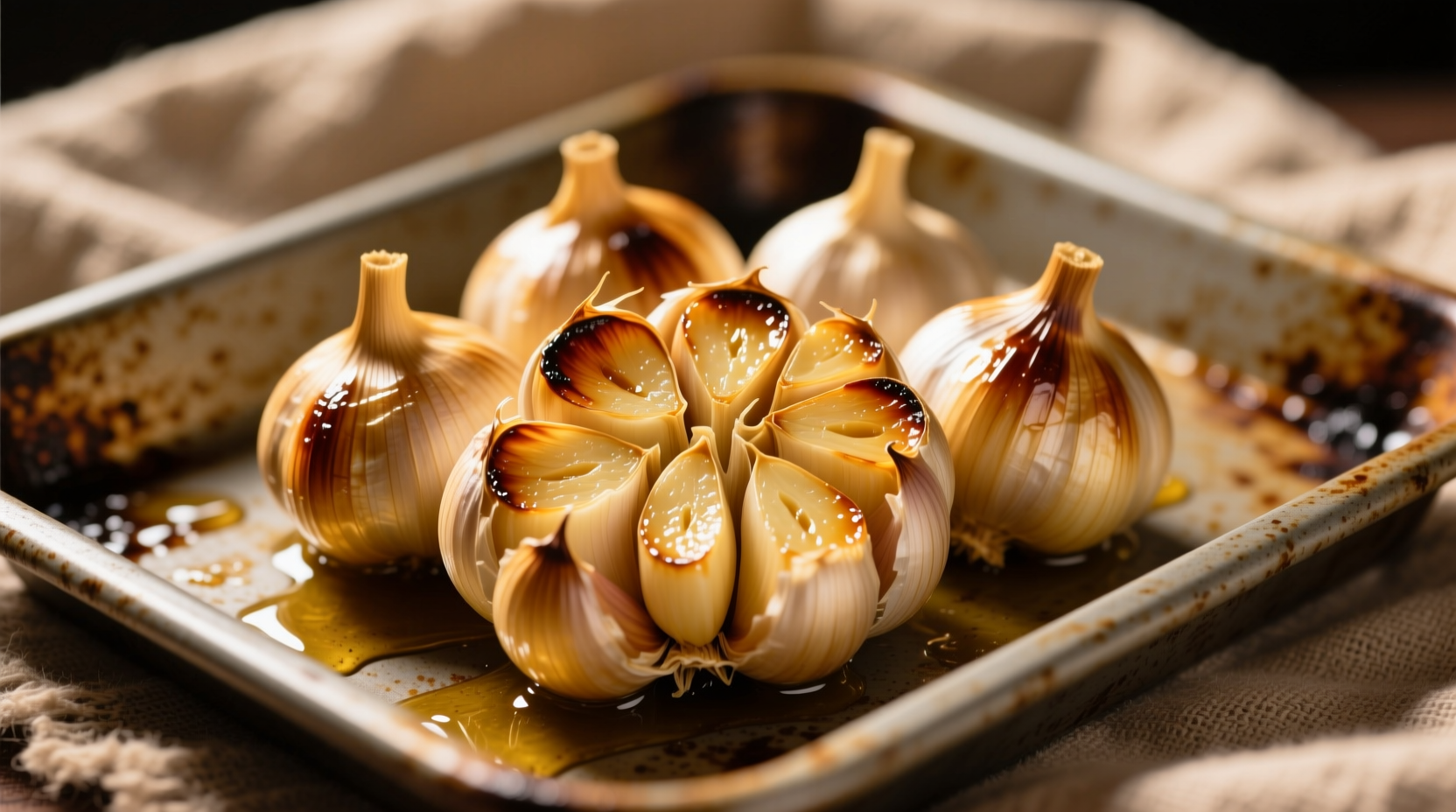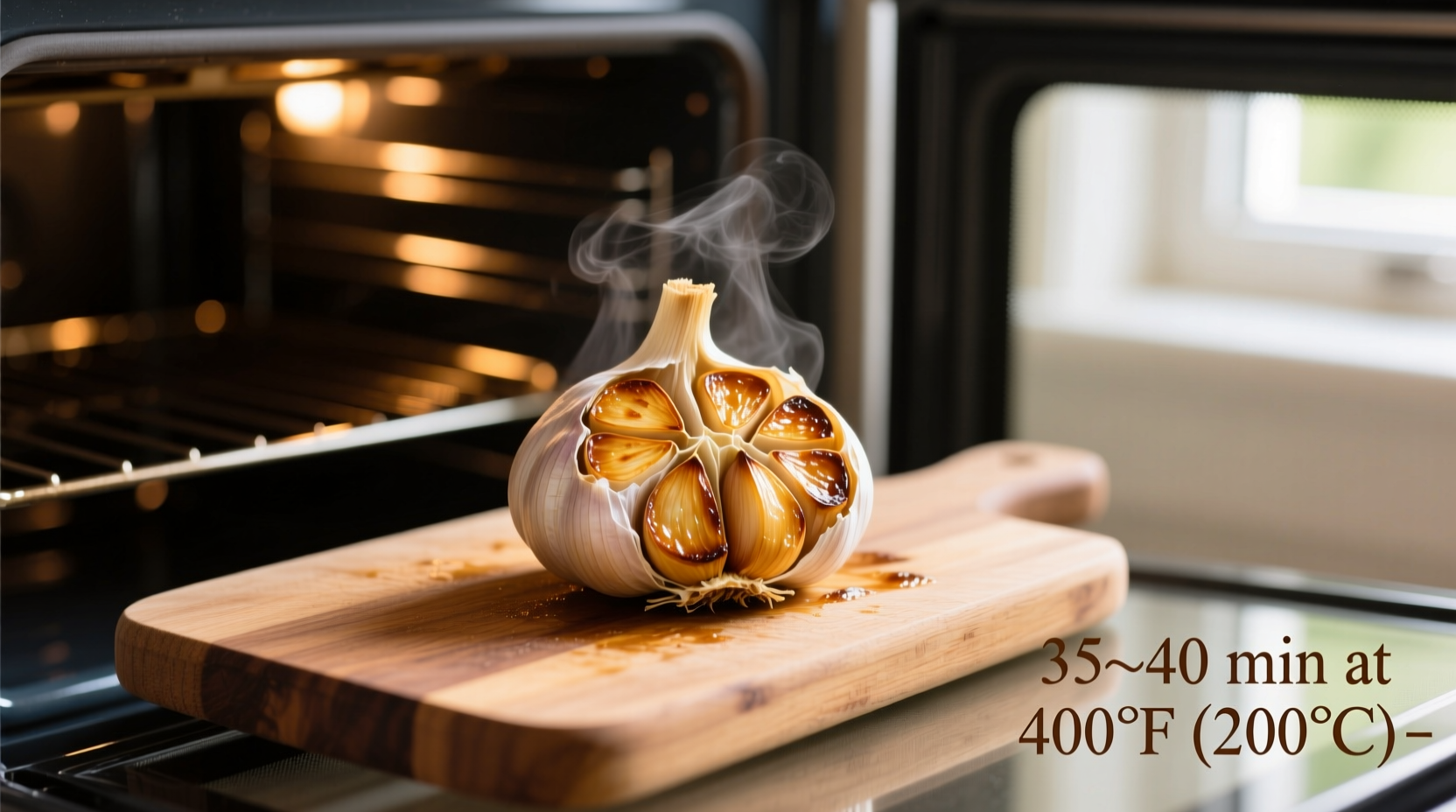Discover the perfect timing and technique to transform pungent garlic into sweet, mellow perfection. Whether you're preparing a simple side or crafting restaurant-quality dishes, properly roasted garlic elevates everything from mashed potatoes to salad dressings with minimal effort.
Why Proper Roasting Time Matters
Getting the timing right for roasted garlic separates culinary success from disappointment. Too short, and you'll miss the magical transformation from sharp to sweet. Too long, and your cloves turn bitter and burnt. The ideal roasting duration depends on three critical factors:
- Garlic head size (larger heads need more time)
- Oven temperature accuracy (calibrate your oven!)
- Desired level of caramelization (mild vs. deeply roasted)

The Complete Roasting Process: Step by Step
Follow this professional chef-tested method for consistently perfect results every time. This technique works whether you're roasting a single head or multiple cloves for meal prep.
Preparation Essentials
Before timing begins, proper preparation ensures even cooking:
- Trim ¼ inch from the top of whole garlic heads to expose cloves
- Drizzle 1 teaspoon olive oil over exposed cloves, letting it seep between layers
- Wrap each head loosely in aluminum foil (creates steam for tender results)
- Place on baking sheet with cut side up
Timing Variations by Method
| Garlic Form | Temperature | Time | Visual Indicators |
|---|---|---|---|
| Whole head (medium) | 400°F (200°C) | 35-45 minutes | Golden brown, soft when pressed |
| Individual cloves | 400°F (200°C) | 15-20 minutes | Slightly shrunken, golden edges |
| Whole head (low temp) | 325°F (160°C) | 55-65 minutes | Deep golden, jelly-like texture |
Troubleshooting Common Roasting Issues
Even experienced cooks encounter these challenges. Here's how to fix them:
Burnt Garlic Edges
If your cloves develop dark spots before becoming tender, your oven runs hot or you've exceeded recommended times. The USDA Food Safety and Inspection Service recommends checking garlic at 5-minute intervals during the final cooking phase to prevent burning. Reduce temperature by 25°F and extend cooking time slightly for more controlled caramelization.
Under-Roasted, Crunchy Garlic
When cloves remain firm after the recommended time, you've likely encountered one of these issues:
- Large garlic heads needing additional time (add 5-10 minutes)
- Inaccurate oven temperature (use an independent oven thermometer)
- Insufficient oil penetration (try making small incisions between cloves)
According to the American Chemical Society's research on food chemistry, garlic requires sustained heat exposure to fully convert its harsh compounds into sweet, aromatic molecules through the Maillard reaction.
Creative Applications for Perfectly Roasted Garlic
Don't limit yourself to spreading roasted garlic on bread. Professional chefs use these techniques to maximize flavor impact:
- Infused oils: Blend roasted cloves with extra virgin olive oil for dipping sauces
- Compound butter: Mix with softened butter for steak topping (1 head per ½ cup butter)
- Flavor base: Add to soups and stews during the last 10 minutes of cooking
- Salad dressing: Emulsify with lemon juice and Dijon mustard for instant vinaigrette
Food historians note that roasted garlic has been used since ancient Roman times for both culinary and medicinal purposes. The University of California's agricultural extension documents show that proper roasting reduces allicin content by up to 90%, transforming garlic's sharp bite into complex sweetness while retaining health benefits.
Storage and Shelf Life Guidelines
Preserve your roasted garlic's quality with these food safety recommendations:
- Refrigerate in airtight container for up to 10 days
- Freeze cloves in olive oil for up to 6 months
- Never store at room temperature for more than 4 hours (botulism risk)
The FDA's Food Code specifies that cooked garlic in oil mixtures must be kept below 41°F or above 135°F to prevent bacterial growth. For safe freezing, use ice cube trays to portion roasted garlic before transferring to freezer bags.
Advanced Timing Adjustments
Seasoned cooks make these precise timing adjustments based on specific conditions:
- High altitude cooking: Add 5-7 minutes at elevations above 3,000 feet
- Convection ovens: Reduce time by 25% or lower temperature by 25°F
- Freshly harvested garlic: Reduce time by 5 minutes (higher moisture content)
Culinary research from the Culinary Institute of America shows that garlic harvested in spring contains more moisture, requiring slightly less roasting time than fall-harvested bulbs which have denser cloves.











 浙公网安备
33010002000092号
浙公网安备
33010002000092号 浙B2-20120091-4
浙B2-20120091-4